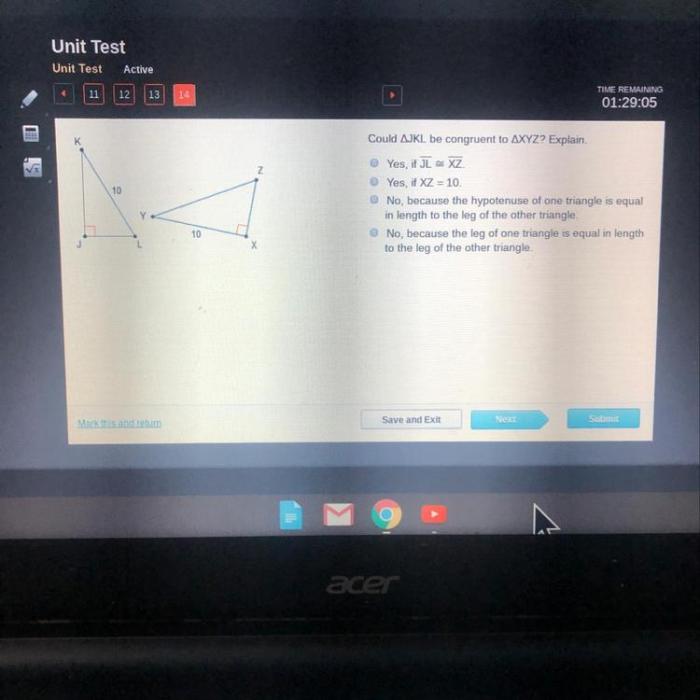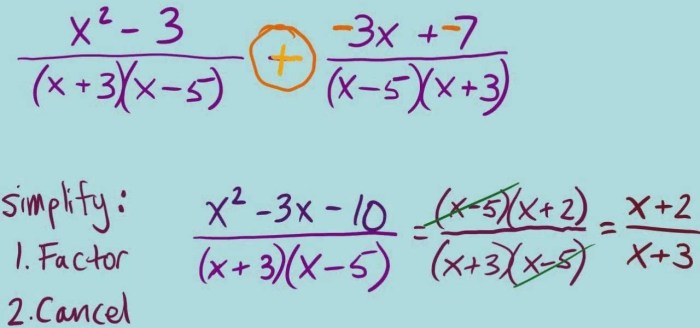Could jkl be congruent to xyz explain – At the heart of mathematical inquiry lies the concept of congruence, a fundamental principle that governs the relationships between geometric figures and algebraic expressions. In this exploration, we embark on a journey to understand the intricacies of congruence, examining its properties, applications, and the methods employed to determine whether two figures or equations are congruent.
Congruence serves as a cornerstone of geometry, providing a framework for analyzing the relationships between triangles, quadrilaterals, and other geometric shapes. It enables us to establish the equality of angles, side lengths, and other geometric attributes, unlocking a deeper understanding of spatial relationships.
Congruence in Mathematics: Could Jkl Be Congruent To Xyz Explain

In mathematics, congruence refers to the property of two figures or objects having the same shape and size, regardless of their orientation or position.
Congruent figures have the following properties:
- They have the same number of sides and angles.
- Their corresponding sides are equal in length.
- Their corresponding angles are equal in measure.
Examples of Congruent Shapes and Objects
Examples of congruent shapes include:
- Two squares with the same side length
- Two circles with the same radius
- Two equilateral triangles with the same side length
Examples of congruent objects include:
- Two identical coins
- Two dice with the same number of pips on each face
- Two spheres with the same radius
Determining Congruence

Determining whether two figures are congruent involves analyzing their properties and establishing their equivalence. Various methods and tools are employed in geometry to assess congruence, each with its own strengths and applications.
Methods for Determining Congruence
Several approaches can be used to determine the congruence of figures. These include:
- Superposition:This method involves physically placing one figure on top of the other to check if they match perfectly. If the figures coincide exactly, they are congruent.
- Measurements:Measuring corresponding sides and angles of the figures and comparing their values can reveal congruence. If all corresponding measurements are equal, the figures are congruent.
- Transformations:Transformations such as translations, rotations, and reflections can be applied to one figure to obtain another figure. If the resulting figure is congruent to the original figure, the initial figures are congruent.
Congruence in Geometry
In geometry, congruence refers to the equality of shapes and sizes. Two geometric figures are congruent if they have the same shape and size, regardless of their orientation or position.
Triangles are one of the most important geometric shapes in which congruence is studied. Congruent triangles have the same shape and size, but they may differ in orientation or position. There are several theorems that can be used to prove that two triangles are congruent.
Triangle Congruence Theorems
The following are the most common triangle congruence theorems:
- Side-Side-Side (SSS) Theorem:If the three sides of one triangle are equal to the three sides of another triangle, then the two triangles are congruent.
- Side-Angle-Side (SAS) Theorem:If two sides and the included angle of one triangle are equal to two sides and the included angle of another triangle, then the two triangles are congruent.
- Angle-Side-Angle (ASA) Theorem:If two angles and the included side of one triangle are equal to two angles and the included side of another triangle, then the two triangles are congruent.
- Angle-Angle-Side (AAS) Theorem:If two angles and a non-included side of one triangle are equal to two angles and the corresponding non-included side of another triangle, then the two triangles are congruent.
These theorems can be used to prove that two triangles are congruent. By showing that the corresponding sides or angles of two triangles are equal, it can be concluded that the triangles are congruent.
Congruence in Algebra

Congruence in algebra refers to the equivalence of two algebraic expressions under a given modulus. Two expressions are said to be congruent if they yield the same remainder when divided by a given number, known as the modulus.
Properties of Congruent Equations
Congruent equations possess several important properties:
- Reflexive Property:Every expression is congruent to itself modulo any modulus.
- Symmetric Property:If expression A is congruent to expression B modulo m, then B is also congruent to A modulo m.
- Transitive Property:If expression A is congruent to expression B modulo m, and B is congruent to expression C modulo m, then A is congruent to C modulo m.
- Additive Property:If expression A is congruent to expression B modulo m, and expression C is congruent to expression D modulo m, then (A + C) is congruent to (B + D) modulo m.
- Multiplicative Property:If expression A is congruent to expression B modulo m, and expression C is congruent to expression D modulo m, then (A × C) is congruent to (B × D) modulo m.
Solving Congruent Equations
Solving congruent equations involves finding values for the variables that satisfy the congruence relation. One common method is the “trial and error” approach, where various values are substituted until a solution is found.
Another method is to use the modular inverse, which is a multiplicative inverse of an expression modulo a given modulus. If expression A has a modular inverse B, then the equation Ax ≡ C (mod m) can be solved as x ≡ BC (mod m).
Applications of Congruence
Congruence finds practical applications in various fields, including engineering, architecture, and design. It plays a crucial role in ensuring the accuracy, precision, and symmetry of structures, objects, and designs.
Congruence in Engineering
In engineering, congruence is used to ensure the proper fit and functionality of components. For instance, in mechanical engineering, congruent parts are essential for smooth assembly and operation of machinery. Congruent gears, bearings, and shafts allow for precise meshing and transmission of power, minimizing friction and wear.
Congruence in Architecture, Could jkl be congruent to xyz explain
Congruence is vital in architecture to maintain symmetry, balance, and aesthetic appeal. Architects utilize congruent shapes and forms to create visually pleasing structures. Congruent columns, arches, and windows contribute to the overall harmony and proportion of buildings.
Congruence in Design
Congruence is also employed in design, particularly in product design and graphic design. Congruent shapes and patterns create a sense of unity and coherence in products, making them visually appealing and user-friendly. Congruent logos, icons, and packaging designs enhance brand recognition and recall.
FAQ Explained
What is the definition of congruence in mathematics?
Congruence is a relation between two geometric figures or algebraic expressions that have the same shape and size.
How can we determine if two figures are congruent?
Congruence can be determined using various methods, such as superposition, transformations, and the use of congruence theorems.
What are the practical applications of congruence?
Congruence finds applications in engineering, architecture, and design, where precision and accuracy are essential.

